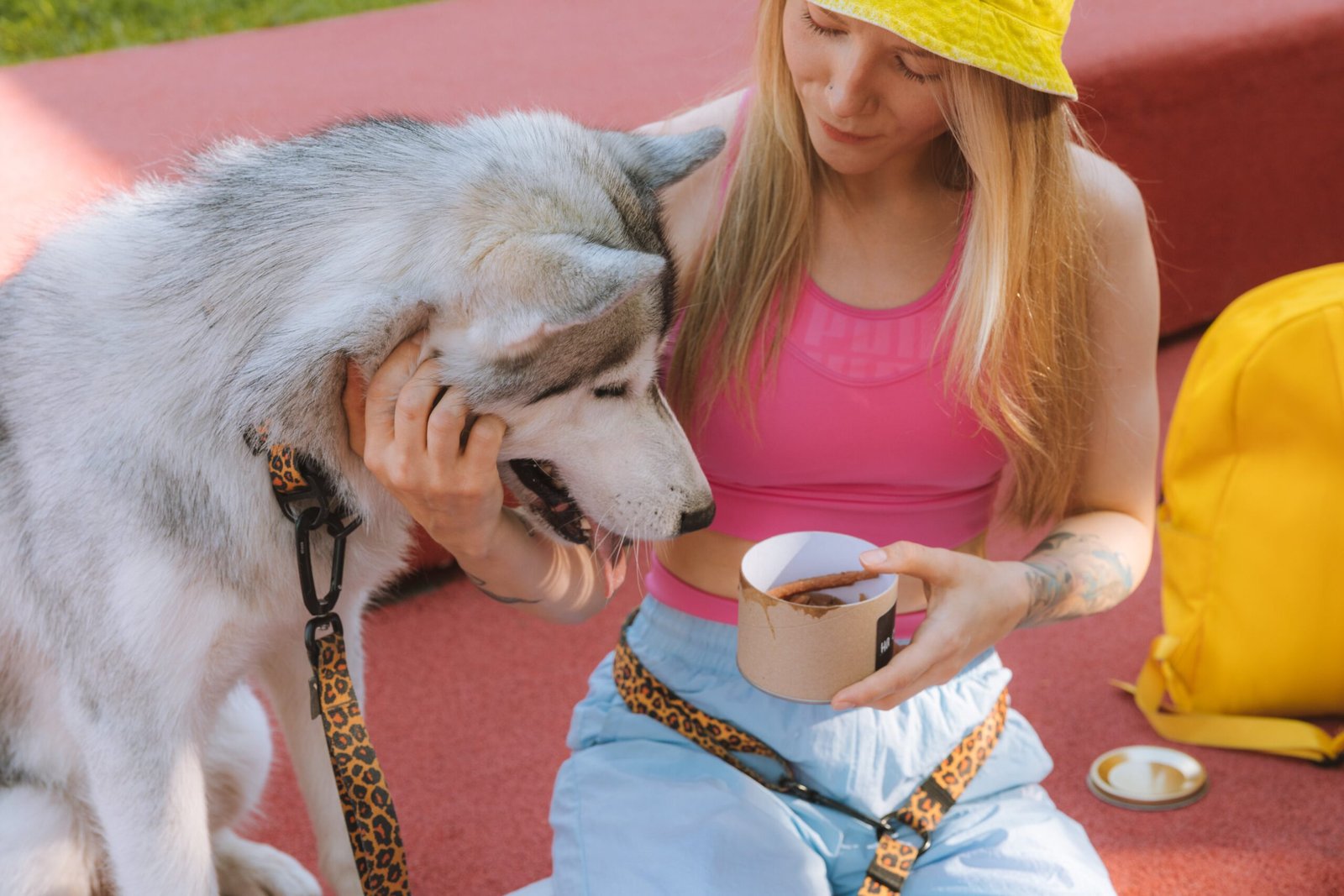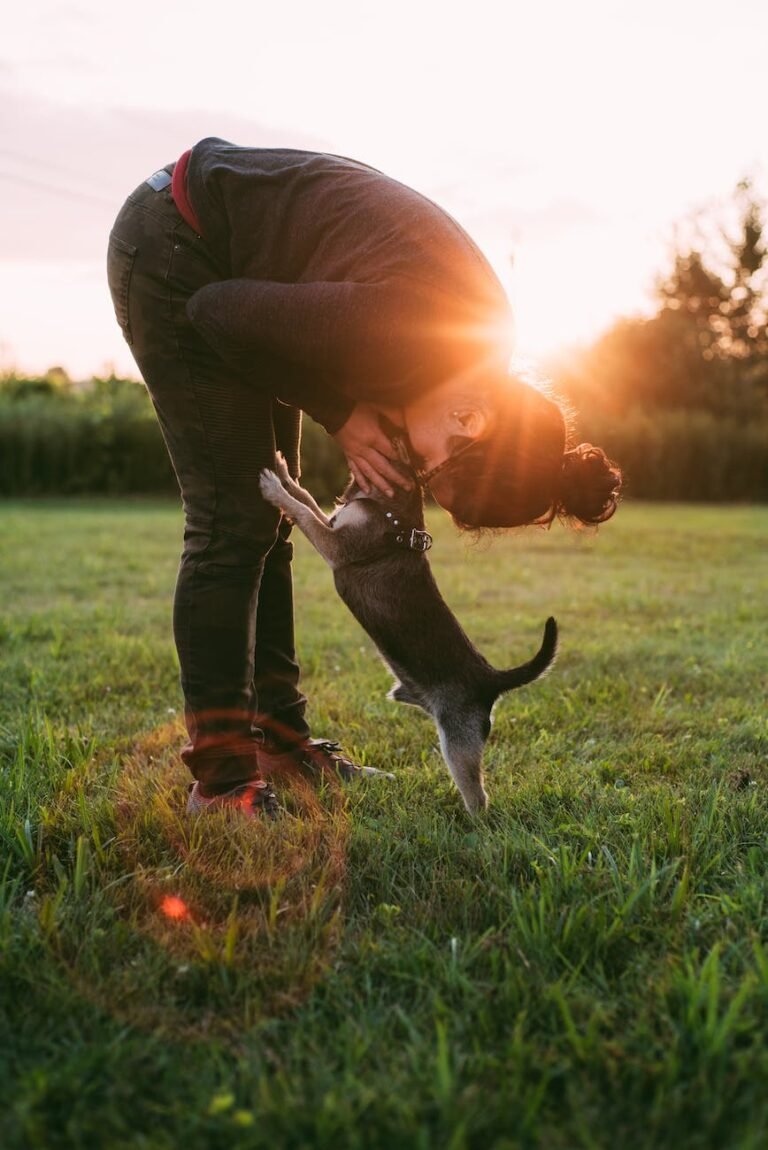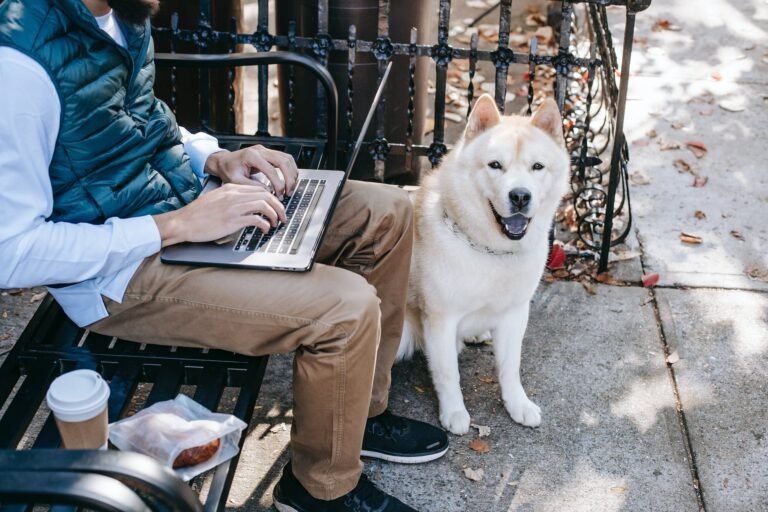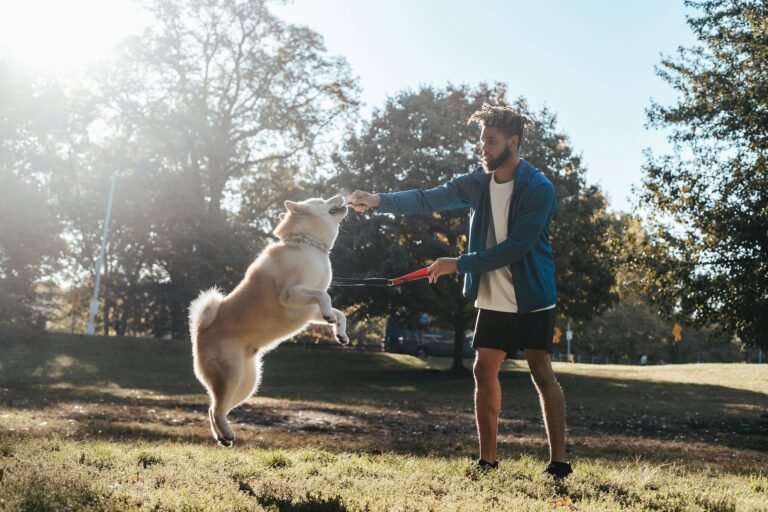How To Help Your Dog Overcome Separation Anxiety
Do you ever come home to find your dog has chewed up your favorite shoes or furniture? Or perhaps your neighbors have complained about excessive barking while you’re away? If so, it’s possible that your furry friend is suffering from separation anxiety. The good news is there are several simple and effective strategies you can implement to help your dog overcome this common issue. In this article, you will discover practical tips and techniques that will not only reduce your dog’s stress but also strengthen the bond between you and your beloved pet. So, let’s get started on creating a better and more relaxed environment for both you and your dog.
Understanding Separation Anxiety in Dogs
Separation anxiety is a common behavioral issue that many dogs experience when they are left alone. It is important to understand what separation anxiety is, the signs and symptoms to look out for, as well as the potential causes behind this condition.
What is separation anxiety?
Separation anxiety refers to a condition where dogs become anxious and distressed when they are separated from their owners or when they are left alone. This anxiety can manifest through various behaviors such as excessive barking, destructive chewing, house-soiling, pacing, and even attempts to escape. It is often a result of dogs feeling panicked and fearful when they are separated from their human companions.
Signs and symptoms of separation anxiety
It is crucial for dog owners to be able to identify the signs and symptoms of separation anxiety in order to provide necessary support and intervention for their furry friends. Some common signs of separation anxiety include:
- Excessive barking or howling
- Destructive behavior, such as chewing furniture or clawing at doors
- Pacing or constant restlessness
- Escape attempts, such as scratching at windows or doors
- Panting, drooling, or excessive salivation
- House-soiling, even if the dog is well-trained
- Loss of appetite
- Excessive defensiveness or aggression when the owner prepares to leave
If you observe these signs consistently whenever you leave your dog alone, it is likely that they are experiencing separation anxiety.
Causes of separation anxiety in dogs
Separation anxiety can have various underlying causes. Dogs may develop separation anxiety due to:
- Sudden changes in routine: Dogs thrive on consistency, so any sudden changes in their daily routine can cause anxiety.
- Past traumatic experiences: Previous experiences of abandonment or neglect can contribute to separation anxiety.
- Lack of socialization: Dogs who have not been properly socialized or have had limited exposure to being alone may struggle to cope with separation.
- Genetic predisposition: Some breeds are more prone to separation anxiety, as they may have a stronger attachment to their owners.
Understanding the potential causes can help dog owners address separation anxiety more effectively and create a safe and comfortable environment for their beloved pets.
Creating a Safe and Comfortable Environment
Providing a designated space for your dog is essential in helping them feel secure and comfortable when you’re not around. Here are some tips to create an environment that promotes their well-being:
Provide a designated space for your dog
Allocate a specific area in your home where your dog can relax and feel safe. This can be a crate, a specific room, or even a comfortable corner with their bed and favorite toys. Having a designated space can give your dog a sense of security and help alleviate their separation anxiety.
Make their space cozy and familiar
Make your dog’s designated space inviting and cozy. Ensure that they have a comfortable bed, blankets, and toys to keep them occupied. You can also place an article of clothing with your scent in their space to provide familiarity and reassurance in your absence.
Use calming scents and music
Calming scents, such as lavender or chamomile, can have a soothing effect on dogs. Consider using these scents in the designated area or using a plug-in diffuser to create a calming atmosphere. Additionally, playing soft and soothing music can help mask any outside noises and create a sense of tranquility.
Offer stimulating toys and activities
Providing your dog with interactive toys and activities can help distract them and keep their minds engaged while you’re away. Puzzle toys, treat-dispensing toys, and interactive games can provide mental stimulation and help relieve anxiety. Additionally, consider leaving out a stuffed Kong toy filled with treats or peanut butter to keep them occupied during your absence.
Creating a safe and comfortable environment can significantly reduce separation anxiety in dogs and help them feel more at ease when you’re not around.
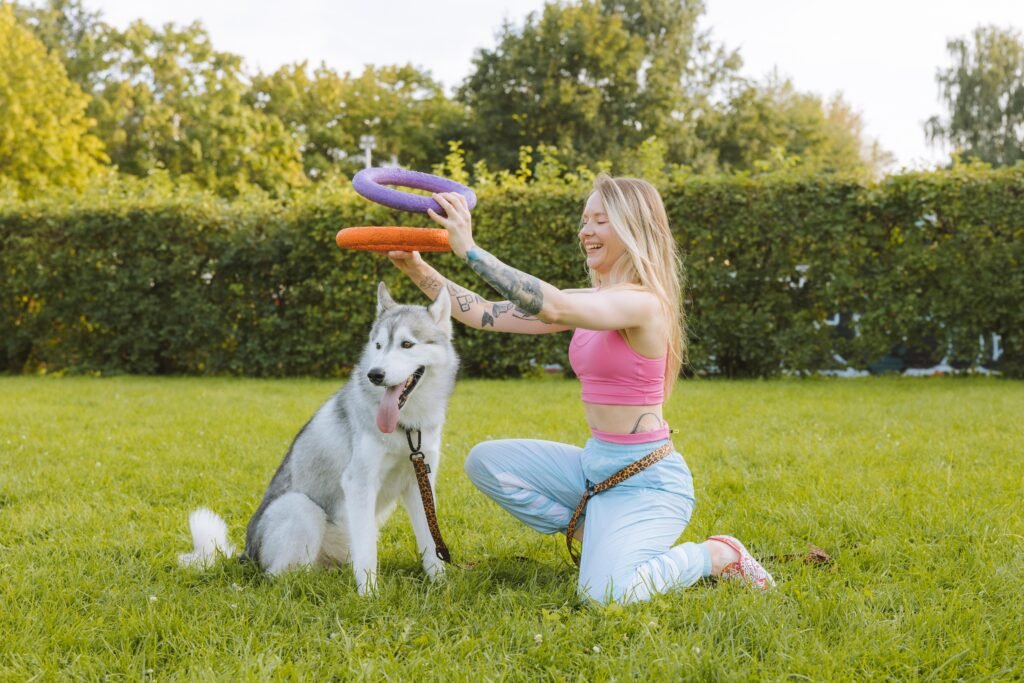
Gradual Desensitization Techniques
To help your dog overcome separation anxiety, it is important to gradually expose them to periods of separation in order to desensitize them to your departures. Here are some techniques to follow:
Start with short periods of separation
Begin by leaving your dog alone for short periods of time, gradually increasing the duration as they become more comfortable. This can be as simple as stepping outside for a few minutes and gradually extending the time you’re away.
Increase the duration gradually
As your dog adapts to shorter periods of separation, gradually increase the duration. Be patient and take it at their pace. By slowly exposing them to longer periods of time alone, you can help them build confidence and reduce their anxiety.
Practice leaving and returning without making a big fuss
When leaving or returning home, it is important to avoid creating a big fuss. Keep your comings and goings low-key to minimize any excitement or distress. This helps your dog understand that departures and arrivals are normal and nothing to be anxious about.
Promote positive associations with departures
Create positive associations with your departures by providing your dog with a special treat or toy that they only receive when you’re away. This can help shift their focus from your absence to the anticipation of a reward, making them associate your departures with something positive.
Gradual desensitization techniques can effectively help your furry friend overcome separation anxiety and build their confidence in being alone.
Establishing a Consistent Routine
Implementing a consistent routine is crucial in managing separation anxiety. Dogs thrive on predictability and routine, so maintaining a structured schedule can greatly benefit them. Here’s how to establish a consistent routine:
Stick to a regular schedule
Try to establish a consistent daily schedule for your dog, including set meal times, exercise sessions, and playtime. By sticking to a routine, your dog will have a clearer understanding of what to expect, which can help reduce their anxiety.
Maintain consistency in your departures and arrivals
When leaving and returning home, try to follow a consistent routine. This can help your dog feel more secure, knowing that your departures and arrivals are predictable. Stick to a simple routine, such as calmly saying goodbye and hello, to avoid causing unnecessary distress.
Incorporate exercise and mental stimulation
Regular exercise and mental stimulation are essential for a healthy and well-balanced dog. Prioritize daily walks, play sessions, and engaging activities that stimulate their mind. Physical exercise and mental enrichment can help reduce anxiety and prevent boredom-related behaviors.
Avoid reinforcing anxious behavior
While it can be tempting to shower your dog with attention and reassurances when they show signs of anxiety, it is important to avoid reinforcing anxious behavior. Instead, reward calm behavior and provide positive attention when your dog is relaxed. This encourages them to associate calmness with positive outcomes.
By establishing a consistent routine, you can help your dog feel more secure and confident, minimizing their separation anxiety.
Positive Reinforcement Training
Positive reinforcement training techniques can be highly effective in overcoming separation anxiety in dogs. By rewarding calm behavior and teaching your dog alternative coping mechanisms, you can help them develop healthier responses to being alone. Here are some tips for positive reinforcement training:
Use treats and rewards to reinforce calm behavior
Reward your dog with treats, praise, and affection when they exhibit calm behavior during times of separation. This positive reinforcement helps them associate calmness with positive outcomes, encouraging them to remain relaxed even when you’re not around.
Teach basic commands to redirect anxiousness
Training your dog basic commands, such as “sit,” “stay,” and “leave it,” can help redirect their anxiousness. By giving them something else to focus on, you can help them shift their attention away from their separation anxiety.
Implement counter-conditioning techniques
Counter-conditioning involves changing your dog’s emotional response to a specific situation. For separation anxiety, you can gradually expose your dog to the triggers that typically cause anxiety, such as picking up your keys or putting on your coat, and pair them with positive experiences, such as treats or playtime. This helps your dog form positive associations with these triggers.
Seek professional help if needed
If your dog’s separation anxiety persists or worsens despite your efforts, it may be beneficial to seek professional help. A reputable dog trainer or behaviorist can provide specialized guidance and support tailored to your dog’s specific needs. They can help create a customized training plan and offer additional techniques to address separation anxiety.
Positive reinforcement training can be a powerful tool in helping your dog overcome separation anxiety and develop healthier coping mechanisms.
Addressing Separation Anxiety through Behavioral Modification
Behavioral modification techniques can be an effective approach for dealing with separation anxiety in dogs. By gradually exposing your dog to separations and implementing specific strategies, you can work towards reducing their anxiety levels. Here are a few key techniques:
Gradual separation exercises
Gradual separation exercises involve practicing leaving your dog alone for short periods of time and gradually increasing the duration. This helps desensitize them to your departures and teaches them that you will always return.
Counter-conditioning and desensitization
Counter-conditioning and desensitization techniques are used to change your dog’s emotional response to separation triggers. This involves creating positive associations with these triggers by pairing them with rewarding experiences, such as treats or playtime.
Crate training as a safe space
Crate training can be beneficial for dogs with separation anxiety as it provides them with a safe and secure space. When properly introduced and associated with positive experiences, a crate can become a den-like environment where your dog feels calm.
Medication and supplements as a last resort
In severe cases of separation anxiety, medication or natural supplements may be recommended by a veterinarian. These options should only be considered as a last resort and under the guidance of a professional. Medications and supplements can help alleviate anxiety symptoms, but they should always be used in conjunction with behavioral modification techniques.
Addressing separation anxiety through behavioral modification requires patience, consistency, and a tailored approach to your dog’s specific needs. Seeking professional guidance can greatly improve the effectiveness of these techniques.

Preventing Confinement Anxiety
Preventing confinement anxiety involves gradual and positive exposure to crate training. Here’s how to ensure your dog feels comfortable and safe in their crate:
Introduce crate training early on
Start crate training your dog from a young age to promote positive associations with being confined. Gradually introduce them to the crate, allowing them to explore it at their own pace before encouraging them to enter.
Make the crate a positive and comfortable place
Make the crate a pleasant and inviting space for your dog by adding bedding, toys, and treats. Provide them with their meals in the crate to create positive associations with this confined area.
Train your dog to associate the crate with positive experiences
Associate the crate with positive experiences by rewarding your dog with treats or praise whenever they voluntarily enter the crate. Gradually increase the time they spend in the crate while making sure they remain calm and relaxed.
Avoid using the crate as a punishment
It is important to never use the crate as a form of punishment. The crate should always be associated with positive experiences, comfort, and safety. Using it as a punishment can create negative associations and worsen anxiety.
By following these guidelines, you can help prevent confinement anxiety and ensure that your dog sees their crate as a safe and comfortable space rather than a source of stress.
Seeking Professional Help
If your dog’s separation anxiety persists or if their symptoms are severe, it is crucial to seek professional help. Consulting with a veterinarian and finding a reputable dog trainer or behaviorist can provide invaluable support. Here are some steps you can take:
Consult with a veterinarian
A veterinarian can assess your dog’s overall health and determine if there are any underlying medical conditions contributing to their separation anxiety. They can also recommend appropriate medications or supplements if necessary.
Find a reputable dog trainer or behaviorist
A reputable dog trainer or behaviorist can provide expert guidance and personalized training plans to address your dog’s separation anxiety. They can teach you specific techniques and strategies that are tailored to your dog’s needs.
Consider specialized anxiety medications or supplements
In severe cases, a veterinarian may prescribe anti-anxiety medications or suggest natural supplements to help manage your dog’s separation anxiety. These should always be used under professional guidance and in conjunction with behavioral modification techniques.
Explore alternative therapies such as acupuncture or massage
Alternative therapies, such as acupuncture or massage, may also be helpful in managing separation anxiety. These therapies can help promote relaxation and reduce stress levels in your dog. Consult with a professional who specializes in these therapies to determine their suitability for your furry friend.
Seeking professional help is essential in ensuring a comprehensive and effective approach to managing your dog’s separation anxiety. Professionals can provide the necessary expertise and guidance to address the underlying causes and work towards a solution.
Supporting Your Dog’s Emotional Well-being
Supporting your dog’s emotional well-being is vital in helping them overcome separation anxiety. Here are some ways to provide optimal emotional support:
Provide physical exercise and mental stimulation
Daily physical exercise, such as walks and playtime, is crucial for your dog’s overall well-being. Exercise helps alleviate stress and anxiety, promotes relaxation, and releases pent-up energy. Additionally, engaging in mental stimulation activities, such as training sessions or puzzle toys, can help keep their mind occupied and prevent boredom-related anxiety.
Engage in interactive playtime
Regular interactive playtime with your dog is not only a bonding experience but also helps build their confidence and reduces anxiety. Play games that require focus and problem-solving, such as hide-and-seek or treasure hunts, to keep them mentally engaged and distracted from their separation anxiety.
Use puzzle toys and food-dispensing games
Puzzle toys and food-dispensing games provide mental stimulation and occupy your dog’s attention during periods of separation. These toys require problem-solving skills and help keep your dog engaged and entertained.
Promote a calm and relaxing environment
Creating a calm and relaxing environment is crucial for dogs with separation anxiety. Minimize loud noises, provide soft bedding, and ensure a comfortable temperature in their designated space. Consider using calming scents, such as lavender, and playing soothing music to help create a serene atmosphere.
By actively supporting your dog’s emotional well-being through exercise, stimulation, and a calm environment, you can significantly reduce separation anxiety and help them thrive.
Lifestyle Changes to Reduce Separation Anxiety
In addition to behavioral modification techniques, certain lifestyle changes can help reduce separation anxiety in dogs. Here are some suggestions to consider:
Spend quality time with your dog
Ensuring that your dog receives plenty of quality time and attention from you can help alleviate separation anxiety. Engage in activities they enjoy, such as walks, playtime, and training sessions. This helps strengthen the bond between you and promotes a sense of security.
Encourage independence and confidence
Foster independence and confidence in your dog by gradually increasing their exposure to being alone. Start by leaving them alone for short periods and gradually increase the duration. This helps build their confidence and reduces their reliance on constant human companionship.
Avoid sudden changes in routine
Dogs thrive on routine, so sudden changes can trigger anxiety. Try to keep their daily schedule consistent and minimize unexpected changes. If you anticipate any disruptions, gradually prepare your dog by slowly introducing the changes ahead of time.
Consider the possibility of getting a companion for your dog
If your dog’s separation anxiety persists, you may consider getting a companion for them. Another dog can provide companionship and alleviate feelings of loneliness and anxiety. However, it is important to consider the compatibility between the two dogs and consult with a professional before making this decision.
By implementing these lifestyle changes, you can create a more secure and stable environment for your dog, reducing their separation anxiety and promoting their overall well-being.
In conclusion, separation anxiety in dogs is a common condition that can cause distress for both the dog and their owner. The good news is that with time, patience, and the right approach, separation anxiety can be effectively managed. By understanding the causes and symptoms of separation anxiety and implementing strategies such as creating a safe and comfortable environment, gradual desensitization techniques, establishing a consistent routine, positive reinforcement training, and seeking professional help when needed, you can help your dog overcome separation anxiety and enjoy a happier and more relaxed life. Remember to always prioritize your dog’s emotional well-being and provide the necessary support and care to help them thrive.

